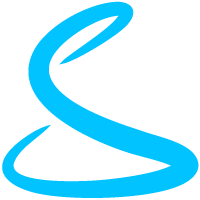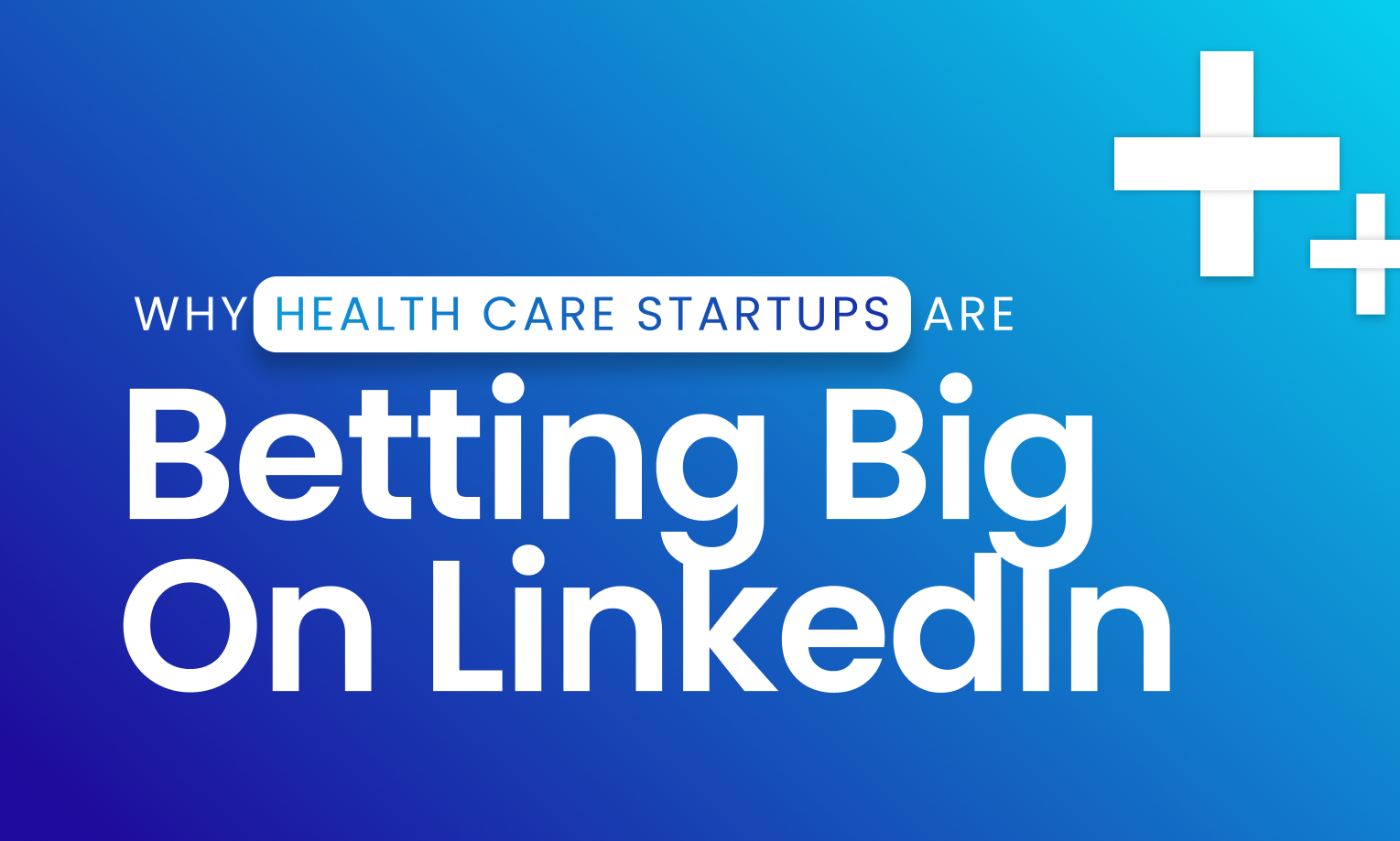
In 2025, one thing is clear: LinkedIn has become the lifeline for healthcare startups trying to grow, build trust, and reach decision-makers.
For years, when people thought about LinkedIn ads or content, the default assumption was that it was only useful for SaaS companies, tech giants, or recruitment firms. Healthcare was often overlooked as “too niche” or “too regulated” to thrive on the platform.
But that couldn’t be farther from the truth. Today, healthcare startups, ranging from nutrition coaches to medical device makers, are betting big on LinkedIn. And the results speak for themselves.
Why LinkedIn Makes Sense for Healthcare Startups
The healthcare industry is unique compared to traditional B2B segments. Startups in this space face three major hurdles:
- Complex decision-making cycles – Hospitals, insurance companies, and healthcare providers involve multiple stakeholders before approving a deal.
- Trust and credibility – In an industry where lives are at stake, building authority and transparency isn’t optional—it’s survival.
- Highly targeted audience – Whether you’re selling a health-tech platform, a medical device, or professional coaching, your target audience is niche and selective.
This is where LinkedIn shines. With over 1 billion professionals worldwide (LinkedIn, 2024), the platform is designed for reaching professionals, decision-makers, and industry leaders in a highly targeted way.
For healthcare startups, this means:
- Precision targeting: You can run campaigns aimed at job titles like “Medical Director,” “Procurement Manager,” or “Hospital Administrator.”
- Professional context: Unlike Instagram or Facebook, LinkedIn is where business conversations actually happen.
- Thought leadership: A strong content strategy can turn a healthcare startup founder into an industry voice.
The Power of Ads for Healthcare Startups
LinkedIn Ads may seem expensive compared to Facebook or Google, but for healthcare startups, the quality of leads outweighs volume.
For example, our work with Andrea Nordling, a nutritionist and business coach, shows what’s possible. By optimizing her LinkedIn profile and running targeted ads, we helped Andrea boost her LinkedIn visibility by 50.3% in just 3 weeks and consistently generate 18–22 leads per month (case study here).
Andrea isn’t a large healthcare company; she’s a solo coach.
Yet, by positioning herself as an authority on LinkedIn and running well-crafted ads, she was able to attract high-quality clients and sustainably grow her business.
Now imagine what the same principles can do for larger startups in healthcare tech, medical devices, or consulting.
Organic + Paid = The Winning Formula
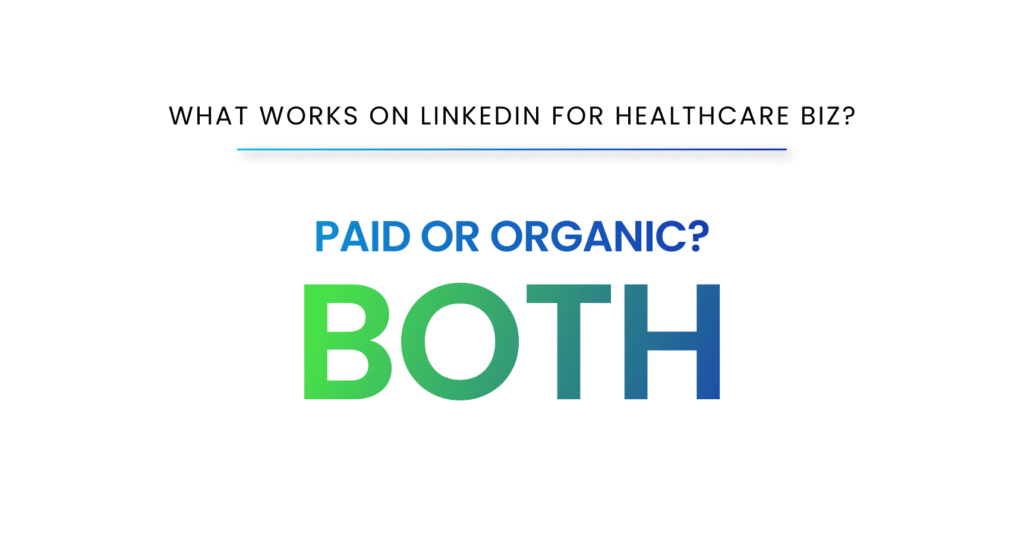
Healthcare startups that succeed on LinkedIn don’t just run ads—they also invest in organic growth.
Here’s the formula we recommend:
- Build thought leadership content – Founders and executives should post regularly about healthcare trends, case studies, and lessons from the field. This builds trust and authority.
- Run MoFu (Middle of Funnel) ads – Instead of pitching directly, offer lead magnets like whitepapers (“The Future of AI in Healthcare Diagnostics”) or free webinars for medical professionals. This captures the right audience without sounding salesy.
- Use retargeting – LinkedIn allows you to remarket to users who visited your website, watched your video ads, or engaged with your posts. In healthcare, where decisions take time, retargeting is key to staying top of mind.
LinkedIn’s Healthcare Playbook
LinkedIn itself has acknowledged that healthcare is one of the fastest-growing segments on the platform. In fact, LinkedIn’s industry insights list shows thousands of healthcare companies already running successful campaigns.
While many of those are large, well-known names, we’ve seen smaller startups replicate that success on a lean budget. The trick lies in hyper-targeting and storytelling.
When you speak in the language of your ICP (ideal customer profile), even a small ad spend can get you strong results.
For example, for SiteHub, a Danish logistics company (not healthcare, but similar in principle), we ran LinkedIn ads in the local Danish language instead of English. The cultural coding alone made the ads outperform expectations (case study here).
The same applies in healthcare—if your audience is local clinics in Canada, don’t speak generic “tech jargon.” Speak in their world, their language, their pain points.
Reminder
Apart from the excitement, you must not forget that healthcare companies have to be very aware of their responsibilities while advertising on LinkedIn. Don’t forget to check out LinkedIn’s advertising guidelines for healthcare companies.
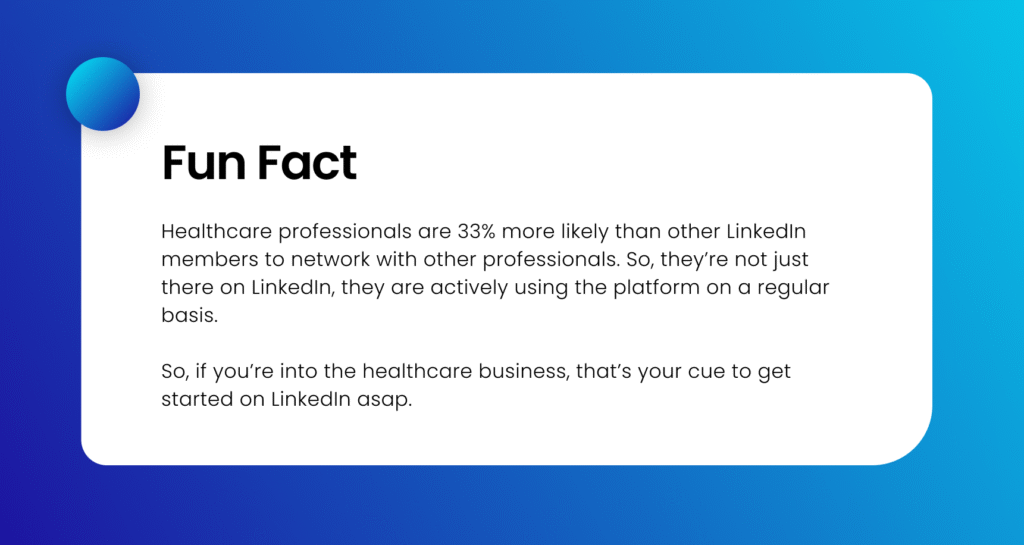
Why Healthcare Startups Can’t Afford to Ignore LinkedIn in 2025
Here are four reasons why LinkedIn is non-negotiable for healthcare founders today:
- B2B Buyers Live Here
In the US alone, there are 8 million healthcare professionals who are on LinkedIn (reported in 2023). If your startup sells to hospitals, insurers, or corporate HR (for wellness programs), this is where they’re researching and networking. - The Credibility Factor
Healthcare is built on trust. A well-optimized LinkedIn profile, testimonials, and a consistent content presence act as credibility boosters. - AI + LinkedIn = Targeting Powerhouse
LinkedIn’s Campaign Manager now integrates AI-driven optimization. In practice, this means startups can refine audiences more effectively than ever-getting better ROI without blowing budgets. - Multi-Goal Flexibility
Whether your startup wants to attract patients, partners, or professionals, LinkedIn has formats to fit:- Video ads for storytelling
- Carousel ads for education
- Lead-gen forms for appointment booking or demos
Real Example: Flyability (Drone + Healthcare Parallel)
One of the most unusual but powerful examples is our work with Flyability, a Switzerland-based drone company.
Now, you might wonder, “What does a drone company have to do with healthcare?”
Here’s the link: Like healthcare startups, Flyability was selling specialized, high-ticket technology to a niche professional audience.
By running only LinkedIn ads, we helped Flyability generate 15–18 highly qualified leads per month while positioning them against competitors in their space (full case study here).
This is exactly what healthcare startups can achieve when they stop treating LinkedIn as “just another social platform” and instead leverage it as their primary growth engine.
How to Get Started (Without Overwhelming Yourself)
If you’re a healthcare founder and LinkedIn feels intimidating, start simple:
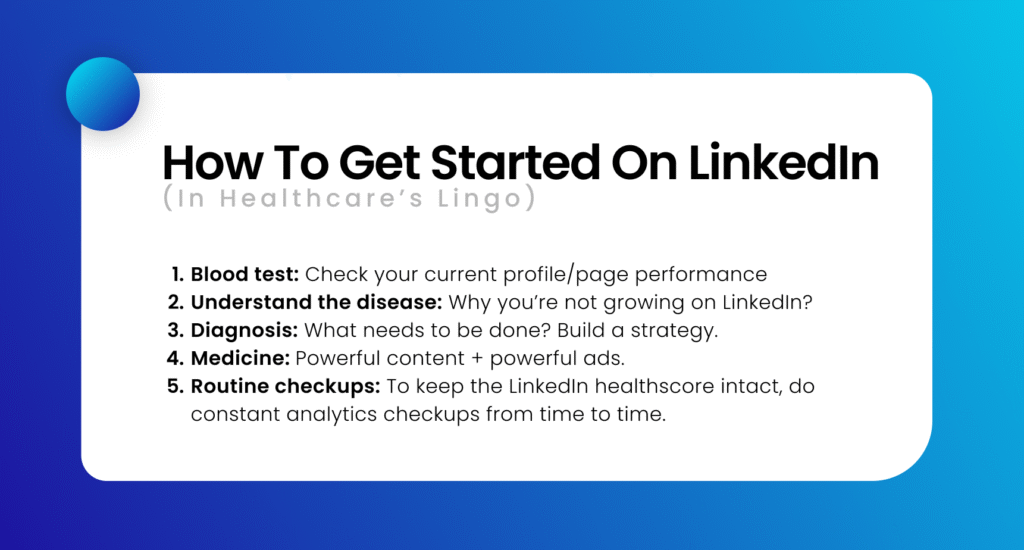
- Optimize your profile – Think of your LinkedIn profile as your “mini-website.” Make sure it reflects authority, achievements, and clear messaging.
- Post twice a week – Share industry insights, patient success stories (without breaching privacy), or leadership lessons. Consistency matters more than perfection.
- Experiment with small ad budgets – You don’t need $50,000. Even $1,000–$2,000/month can help you test LinkedIn ads effectively.
- Track the right metrics – Don’t obsess over likes. Focus on CTR, lead form fills, and cost per qualified lead.
- Refine continuously – Just like M&M Recruitment (one of our clients), sometimes strategies need pivots. After initial slow results, we shifted gears for them with a mix of SEO, content, and LinkedIn ads—helping them build a stronger pipeline (full story here).
Final Thoughts
The healthcare industry is undergoing a massive transformation, and startups are at the heart of it. But growth in this space isn’t just about product innovation; it’s about finding the right audience and earning their trust.
That’s why healthcare startups are betting big on LinkedIn in 2025. Because unlike any other platform, LinkedIn gives them the rare ability to:
- Target precisely
- Build credibility
- Tell human-centered stories
- Generate consistent, qualified leads
If your healthcare startup is still sleeping on LinkedIn, it’s not just a missed opportunity; it could be the very reason your competitors outpace you.
